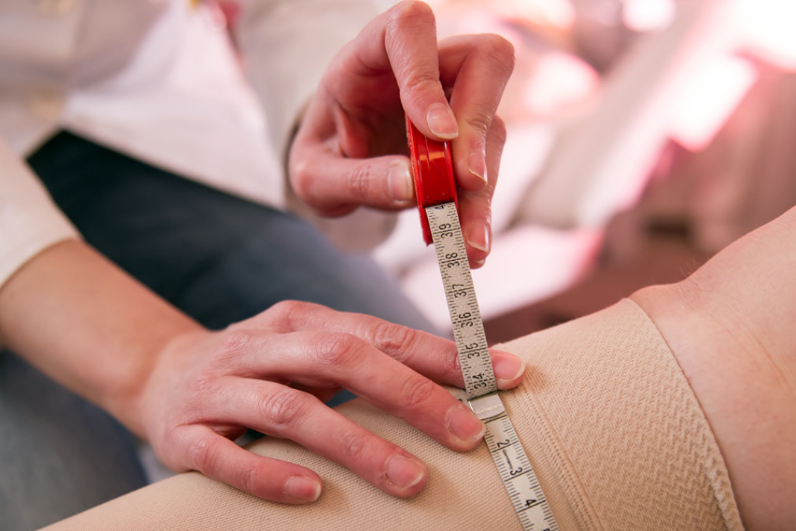Compression garments are designed to help control swelling in the feet, ankles, and lower legs. For numerous reasons, including excessive swelling and mobility issues, patients may have trouble with compression garments.

What if my Legs are Too Swollen for Compression Stockings?
Patients often first present with so much swelling, also called edema, they cannot get compression stockings on at all. During the reduction phase, the swelling can be greatly reduced by working with a vein specialist, like those at Inovia Vein Specialty Centers.
Through reduction therapy, a vein specialist can help by wrapping the patient’s legs with an Unna Boot– a medicated compression bandaging with the goal of significantly reducing swelling over a period of time. The reduction phase can take approximately one month, and may involve going back for wraps one to two times per week.
This process is especially important if the patient has open wounds or venous leg ulcers, as it is difficult to wear compression garments with these conditions. Treating the wounds before starting compression garments for the first time can make it much easier and more effective. Once the leg swelling has reduced, the patient is ready for the maintenance phase. Now is a good time for a professional stocking fitting to keep the legs from reverting back to the swollen state.
What if I Have Difficulty with Compression Garments Due to Mobility Issues?
Due to mobility issues, many patients have difficulty getting compression stockings on and off. Fortunately, there are special devices to help patients put on (don) and take off (doff) compression stockings.
One device we use at Inovia is the Sigvaris Doff N’ Donner, which can be found at many retailers. Some patients have also seen success with using rubber gloves to help don and doff compression garments. A quick internet search can provide patients with resources, including videos and tutorials, to help them with compression garments.
Another option for those who struggle with compression garments are elastic wraps that go around the legs and then are tightened with Velcro securement. These can be useful during the initial reduction phase, as well as the maintenance phase once swelling has decreased.
For long term, some patients find intermittent pneumatic pumps like the Tactile Flexitouch pump to help reduce swelling and symptoms of venous insufficiency at home.
Inovia Can Help With Compression Garments
In the acute setting with severe swelling and wounds, patients may need to visit a vein specialist every few days to change their wraps during a reduction phase. In some cases, home health can be an option.
There is no one-size-fits all solution, and every case should be considered to best help patients through this common challenge. To learn more about how the vein specialists at Inovia can help you, schedule an appointment today!